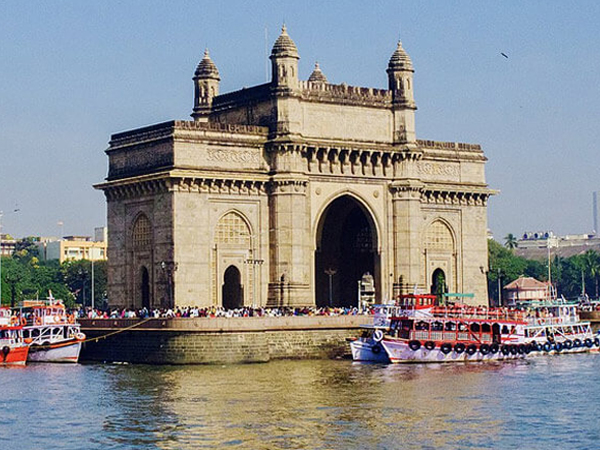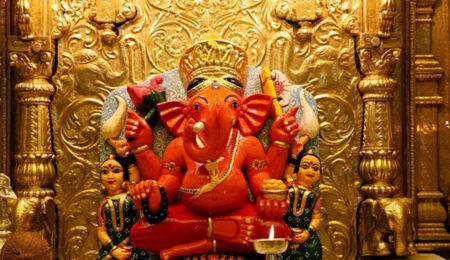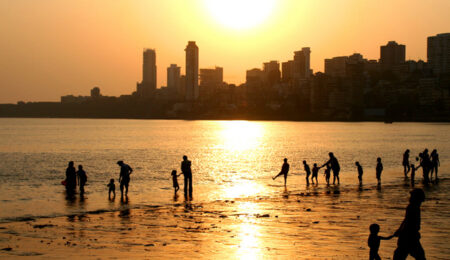Here’s a list of Top Attractions In Mumbai where you can relish the mystic beauty of the hill stations; watch the mesmerizing sunrise and sunsets at the beaches; indulge in outdoor adventure activities; seek blessings at pilgrimage destinations; enjoy nature walks and jeep safaris at wildlife sanctuaries; marvel at the medieval architectural beauty and witness a unique festival where millions of fireflies dance.
Chhatrapati Shivaji Terminus

Chhatrapati Shivaji Terminus (CST) is popular railway station and is a spitting image of Victorian-Gothic style of architecture in India. Located in the heart of Mumbai, the CST is also a ‘World Heritage Site’ declared by UNESCO in 2004. Built in 1888, the station is the grand reminder of the British Raj pre-independence and is still one of the most historical landmarks within the Central Business District (CBD) of Mumbai. A bustling terminus, the CST is well-connected by rail to all parts of the country. It stands as the final result of great industrial revolution technology, merged with Victorian/Gothic revival styles based on late-Italian model architecture.
The structure represents the heart of the mercantile facet of the city and also symbolizes the British Commonwealth. Apart from being Victorian-Gothic in architecture, parts of this grand edifice also contain remnants of Mughal styled architecture. An outstanding example of the late 19th century designs, the CST is associated with the city of Mumbai since time immemorial. The city flourished, businesses boomed and a thriving film industry grew, with the Chhatrapati Shivaji Terminus being the core witness to it all. Scroll down to know more about this treasured structure.
Asiatic Society of Mumbai Town Hall
Town Hall is one of the most majestic structures among the other heritage buildings in the city of Mumbai. One can say that this building represents one of the last architectural remnants of the Victorian Bombay (Mumbai). The Town hall was colloquially called as ‘Tondal’ during the 19th century. The Town Hall houses the ‘Asiatic society of Bombay’ (Mumbai), which is a public state library in the city. For this reason, the structure is considered a storehouse of information. The objective behind the conservancy of Town Hall is to inspire research and to treasure the literatures, sciences and oriental arts. Churchgate Station is the nearest railway station. The Chhatrapati Shivaji Terminus is very close to the Town Hall venue. Town Hall is well-connected by roads, so one can hire autos or travel by bus to reach the site. Truly an architectural marvel, the Town Hall is a popular tourist attraction.
Gateway of India

The Gateway of India is one of India’s most unique landmarks situated in the city of Mumbai. The colossal structure was constructed in 1924. Located at the tip of Apollo Bunder, the gateway overlooks the Mumbai harbor, bordered by the Arabian Sea in the Colaba district. The Gateway of India is a monument that marks India’s chief ports and is a major tourist attraction for visitors who arrive in India for the first time. At one point of time, this monument represented the grandeur of the British Raj in India. The total construction cost of this monument was approximately 21 lakhs and the whole expense was borne by the Indian government. A favourite spot for tourists, nowadays, this monument attracts vendors, food stalls and photographers. The passing of the ‘First Battalion of the Somerset Light Infantry’ was recorded as the first main event that took place at the Gateway of India. This ceremony was conducted on February 28, 1948, when the last set of British troops and divisions left India, post-independence.
Mani Bhavan
Situated on the tree-laden streets of Gamdevi Mumbai is the Mani Bhavan, famously known as Mumbai home to the great leader Mahatma Gandhi. A retro-styled, double storied building, belonging to the then Indian National Congress supporter and a famous diamond merchant, Raveshankar Jagjeevan Jhaveri, the Mani Bhavan is a simple Gujrati home in downtown Mumbai.
Mahatma Gandhi lived there for seventeen long years from 1917 to 1934 and initiated a number of famous movements like Satyagraha against the Rowlatt Act and Dandi March from here.
Mani Bhavan served as Bombay home to mahatma Gandhi for seventeen long and very crucial years of his life. He had immense faith in the people of Bombay and led several non-violence movements from Mani Bhawan. These include Hindu-Muslim Unity, Khadi Movement, Swadeshi Movement along with Satyagraha. Being the inception home to these movements and Gandhiji’s immense love for this place, Mani Bhavan is now converted to a museum as a tribute to him.
Every inch of this place tells millions of stories about Mahatma Gandhi and his lifestyle. It is highly depictive of how he grew as an individual and a national leader all the years he stayed at Mani Bhavan. The place imbibes a sense of belongingness since being used and lived in by the leader himself and also promotes the use of swadeshi to date. Mahatma Gandhi learned how to use a spinning Wheel at Mani Bhavan only.
The corridors and rooms are filled with scriptures, court orders and other important documents dating back to 1917 and earlier years, which Mahatma Gandhi used to study.
Mani Bhavan is also famous as the place from where Mahatma Gandhi got arrested on January 4th, 1932 while he was standing at the terrace. The terrace, the room Gandhiji lived in and all other places are open to the public for viewing and admiring legendary lifestyle he led.
Bombay High Court

Bombay High Court in Mumbai is one of the oldest High Courts in India. And today, entire Maharashtra and Goa falls under its jurisdiction. Bombay High Court also takes care of the matters in two Union Territories of India – Daman and Diu, and Dadra and Nagar Haveli.
Bombay High court is famed for its architecture too. It was built in the 19th century, by the British, in the eye-catching Gothic Revival style. This High Court is a UNESCO-recognised site, which remains packed with judges and other people who are waiting for their legal appointments.
Chhatrapati Shivaji Maharaj Vastu Sangrahalaya
Mumbai’s most comprehensive and famous museum is the formerly named Prince of Wales Museum. Since the year 1998 though, it has been renamed to Chhatrapati Shivaji Maharaj Vastu Sangrahalaya or CSMVS. With an astounding number of exhibits, close to 50 thousand, the galleries of this museum are guaranteed to keep you occupied for more than just a couple of hours. Built-in the early 20th century, the halls of this mansion have items dating back to the 2nd century A.D. The museum keeps expanding its collection and over the years, objects on Indian culture, history, and art have made this a nice hangout for the keen-minded.
Visit MakeMyTrip for bookings. Also, have a look at our various monthly issues.
|
After Post Contents [Code BL 05] – Full width x 125 px |




